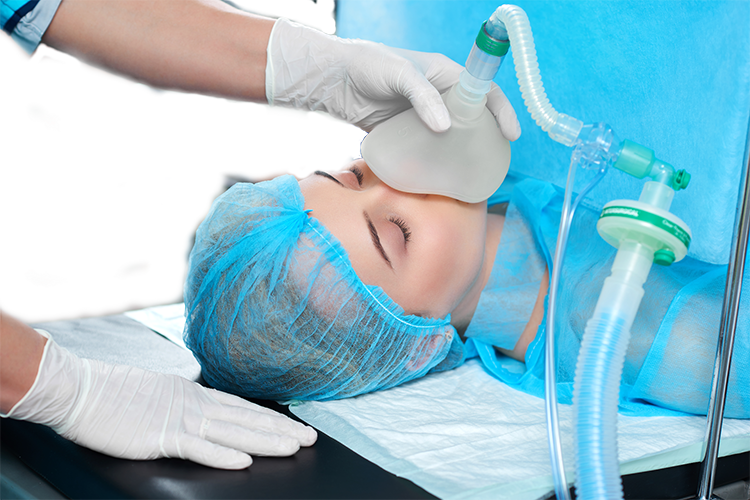General Anaesthesia
WHAT IS GENERAL ANAESTHESIA (NARCOSIS) AND SEDATION?
General anaesthesia is a type of anaesthesia in which the patient is put into a state of narcosis by administering intravenous drugs and/or knockout gas. Sedation, on the other hand, is anaesthesia in which a state of calmness is achieved by administering intravenous drugs or oral medication to the patient. The most important point here is to adjust the level of sedation. Sedation should be conscious sedation in such a way that the patient’s breathing is not jeopardised, taking into account the application of the treatment in the mouth. Deep sedation may cause more harm than good. Therefore, general anaesthesia is considered much safer than deep sedation. In addition, sedation has no narcotic effect, so patients are also given local anaesthesia to numb the area to be operated on.

IN WHICH TYPE OF PATIENTS IS GENERAL ANAESTHESIA / SEDATION PREFERRED IN DENTISTRY?
WHAT ARE THE ADVANTAGES OF DENTAL TREATMENT UNDER GENERAL ANAESTHESIA?
IS THERE ANY PAIN UNDER AND AFTER GENERAL ANAESTHESIA?
HOW LONG DO PROCEDURES PERFORMED UNDER GENERAL ANAESTHESIA TAKE? IS IT NECESSARY TO STAY IN HOSPITAL AFTERWARDS?
The duration of the procedure varies depending on the procedures to be performed in the patient’s mouth. It should be remembered here that dental treatment procedures do not start immediately as soon as the patient is taken to the operating theatre. Before and after dental treatment procedures, there is a patient preparation phase that can take about half an hour in total. After the procedure, the patient is kept under observation for about 1 to 2 hours and then discharged.
WHAT SHOULD BE DONE BEFORE GENERAL ANAESTHESIA?
IS GENERAL ANAESTHESIA FOR DENTAL TREATMENT RISKY?
Hollywood smile is the process of designing congenital or subsequent dental defects due to various reasons in accordance with the facial features of the person and coating them with the appropriate porcelain type.
Since general anesthesia is the process of being put to sleep with the help of various drugs, you are completely asleep and it is not possible to feel any pain.
Patients to be anesthetized must not be full. While the patient is under anesthesia, the foods and acidic gastric fluid in the full stomach may come back through the esophagus and escape into the windpipe, which is undesirable and may cause life-threatening problems. For this reason, food should not be eaten and water should not be drunk until 6 hours before.
Since a sufficient amount of anesthesia is applied, your anaesthesiologist, who will always be with you during the operation, will not allow such a situation by determining your sleep depth with modern monitoring methods.
The anesthetic drugs used today are rapidly effective in the body and are rapidly eliminated from the body. The amount of anesthetic substance detected in breast milk after anesthesia is negligible and is far below the levels that can affect the health of the baby. Therefore, experts recommend that mothers continue breastfeeding their babies after anesthesia.
